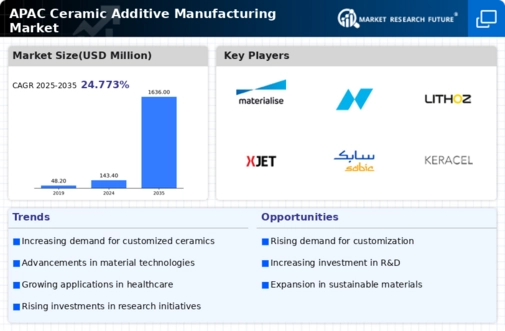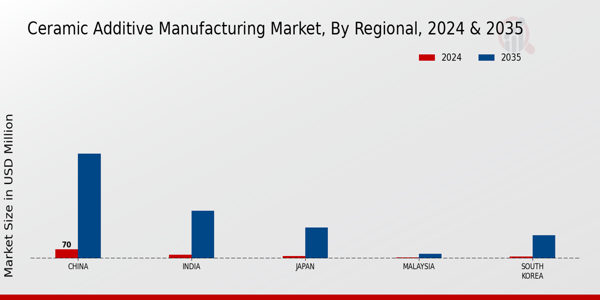The APAC Ceramic Additive Manufacturing Market is witnessing significant growth, reflecting the burgeoning demand for advanced manufacturing technologies in various sectors, including healthcare, automotive, and aerospace. The competitive landscape in this market is rapidly evolving, spurred by technological advancements and the increasing adoption of 3D printing practices. The region's unique strengths, such as a robust industrial base, an expanding consumer electronics sector, and supportive government initiatives for manufacturing innovation, further enhance its appeal.
As companies ramp up their research and development efforts, they are increasingly focusing on integrating new materials and technologies to deliver customized solutions, enabling differentiation and competitive advantage in this dynamic landscape. Materialise, a key player in the APAC Ceramic Additive Manufacturing Market, has established a strong foothold in the region through its commitment to innovation and excellence in 3D printing software and services. The company's strengths lie in its advanced software solutions that facilitate precise control and optimization of the additive manufacturing process, thereby ensuring high-quality outputs.
Materialise's ability to provide tailored solutions for various applications, including prototyping and production, has enabled it to cater effectively to a diverse clientele across industries. Its established relationships with regional manufacturers and ongoing investment in R&D allow for a continuous enhancement of its offerings, positioning Materialise as a significant player in the competitive landscape of ceramic additive manufacturing. Nanoscribe is also a notable entity in the APAC Ceramic Additive Manufacturing Market, with a strong focus on high-precision 3D printing technologies.
The company specializes in producing two-photon polymerization systems, which enable the creation of intricate micro- and nanoscale structures for both prototyping and production applications. Nanoscribe's key products and services are aimed at advancing research and implementation in areas such as micro-optics, microfluidics, and bioprinting. The company's strengths include its cutting-edge technology, which provides exceptional resolution and accuracy, and a skilled workforce that fosters innovation.
Nanoscribe has pursued strategic partnerships and collaborations in the APAC region to expand its market reach, enhance product offerings, and potentially engage in mergers and acquisitions as part of its growth strategy, reflecting its commitment to maintaining a competitive edge in the rapidly evolving ceramic additive manufacturing market.




















